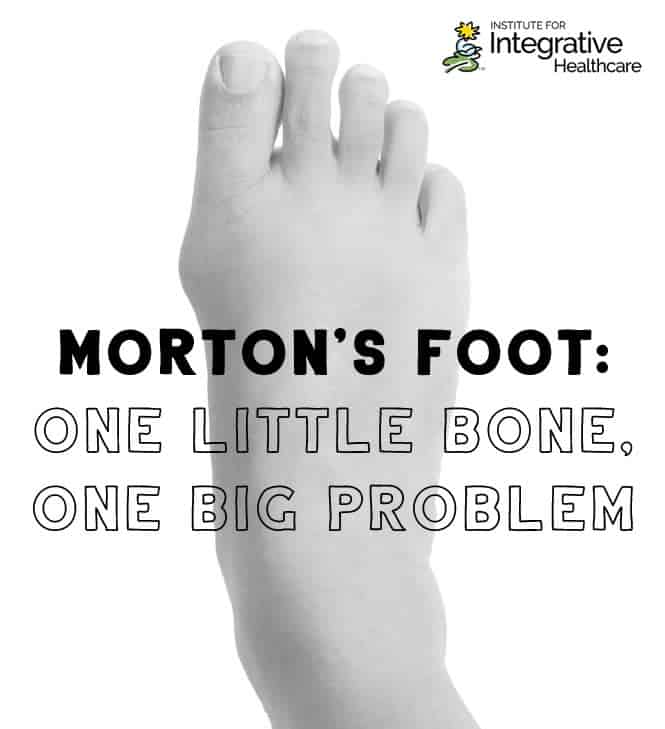

 Want to earn continuing education credit for this article? Learn more.
Want to earn continuing education credit for this article? Learn more.
The human body is indeed a marvelous, well-coordinated system of bones, muscles, organs, glands and a myriad of other wonders. Most of the time, for many people, it works just the way it is supposed to. Our bodies allow us to move about – forward, backward and sideways. Possible infections are thwarted, nourishment is supplied to all regions, toxins are removed and so on and so on. Such a perfect machine cannot be built by man or woman.
But even human beings are not absolute in their perfection. Each of us, or should I say most of us, have some small anomaly, a trait or traits that make us unique. We do not all look alike, talk alike or walk alike – except within a certain universal parameter.
While doing research on another article, I discovered something about myself, that for more than 50 years I had always thought to be normal – only now to find out that by some it is labeled a “deformity.” It is referred to as Morton’s Foot (also called Morton’s Syndrome), so named after Dr. Dudley J. Morton, a physician, orthopedic surgeon, researcher and author who was well-known in the 1920s through the 1950s. He described this condition, in which the second toe appears to be longer that the first or “big” toe.
What Is Morton’s Foot?
If you were to look at a normal foot, according to experts, you would see that the first toe is usually the longest as well as the largest. The remaining toes are shorter and smaller, going down proportionately in size. With a foot exhibiting Morton’s Foot, the first toe may be either equal in length or somewhat shorter than the second toe. In actuality, the cause of this is not that the second toe is longer than the first, as much as the first metatarsal is shorter than it should be in relation to the second metatarsal. It is estimated that only about 20-30 percent* of the world’s population has this configuration of bones in the feet.
Morton’s Foot is not to be confused with Morton’s Neuroma, a condition named for Thomas C. Morton, which is a painful condition of entrapped nerves found in the intermetatarsal spaces of the foot (in acupressure points it would be located in the proximity of Kidney 1), and thought to be caused by the wearing of shoes that are too tight or too narrow.
Morton’s Foot is genetic, while Morton’s Neuroma is acquired. In some cases, the neuroma can be caused by Morton’s Foot.
A foot with a long second toe is unofficially known as the Classic Greek Foot and those who share this distinction share it as well with the Statue of Liberty (also known as Liberty Enlightening the World) created by the artist and sculptor, Frédéric Auguste Bartholdi.
A Cause of Many Ills
Dr. Dudley Morton wrote many articles on the repercussions of having a long second toe; among many other ailments, he claimed the following were a result of this podiatric phenomenon:
- Back pain
- Hip pain
- Knee pain
- Arthritis
- Fibromyalgia
- Bunions and hammer toes
- Temporomandibular joint pain
Morton’s Foot sometimes causes hyper mobility of the first metatarsal and big toe, which can result in a lack of lateral stability in the foot. The bulk of the weight of the body is on a line from the middle of the heel through to the second toe creating a kind of “walking on ice skates” effect, resulting in an unstable ankle.
In a normal foot there is a triangular base created with the heel and the heads of the first and fifth metatarsals that more evenly distributes the weight over a broader surface. Depending on your body structure and postural habit, a person with Morton’s Foot will find him- or herself over pronating or over supinating the foot. This can, in turn, throw the back, shoulders and neck out of alignment. The hips may have a forward tilt.
Dr. Morton isn’t the only person to recognize the connection of this condition to the rest of the body. Dr. Janet Travell also wrote extensively on this structural oddity. Travell was a personal physician to both Presidents Kennedy and Johnson, as well as their families. She was also the person who developed Trigger Point Therapy and imparted a new understanding of myofascial pain syndrome. One full tape of her seven-set series is dedicated to the single subject of Morton’s Foot.
Dr. Burton S. Schuller has written an entire book, Why You Hurt: It All Starts in the Foot, about Morton’s Foot and the associated ailments. He and the others claim that if the foot has this structure, by connection to the rest of the body, there is a resulting chain reaction of misalignment causing all kinds of problems.
Morton’s Foot can be mistaken for Rothbarts Foot, which may manifest similar pain symptoms and musculoskeletal distortions as described earlier. Rothbarts foot features an abnormal congenital deformation of the talus bone. The talus does not develop fully, creating a unique deviation. Metatarsus and Talar Supinatus is witnessed as these bones never establish proper positioning. This results in the hallux (big toe) and first metatarsal bone to visibly appear elevated and inverted with client standing in neutral position. The foot becomes unstable, contributing to chronic pain and postural distortions.
A Simple Solution
Morton’s Foot and many other foot problems are genetic. They are handed down as an unintended gift from generation to generation, just like the natural color of your hair or eyes. There is no cure, though some sufferers have tried rather drastic surgery to alleviate the chronic pain.
There is, however, a rather simple remedy consisting of making a small foot pad approximately the diameter and depth of a quarter or half dollar coin. The foot pad can be made by cutting the shape out of an insole, which can be purchased at any drug store. This is then taped to the base of the toe at the head of the first metatarsal bone. With some creativity you can make a more permanent solution with a full insole and a patch.
Massage Helps Ease the Pain of Morton’s Foot
Clients often arrive at a massage office with non-specific complaints of chronic pain. It is not unlikely that these long time sufferers have heard of all kinds of reasons for their pain, and applied all kinds of remedies over the years. One look at his or her feet will tell you if the person has Morton’s Foot.** Aside from the solution above, massage therapy can do a great deal to ease the possibly related pain.
What is most often recommended is Trigger Point Therapy, although Swedish massage, acupressure, neuromuscular techniques and reflexology will help as well.
The most common trigger points related to Morton’s Foot are:
- Gluteus Medius
- Tensor Fasciae Latae
- Quadriceps
- Peroneus Longus
- Tibialis Posterior
- Adductor Longus
- Flexor Hallucis Brevis
If a client comes to get a massage and seems to suffer from chronic pain with no specific cause, it may be worth the time to check the structure of his or her feet. You can advise him or her about the foot pad, and then provide massage techniques to relax the muscles and address the trigger points. It may surprise both you and your client with great results.
My Own Story
We all have certain traits that are handed down from generation to generation. We share in the shapes of our eyes, our ears, our noses. A woman may have her grandmother’s hands, her father’s smile and her mother’s artistic talent. Some we like, some we wish we could change.
In my case, when I was born, my mother did what many mothers do. She touched and counted my fingers and toes. When they brought me to her later in the day, she looked at my feet. There it was – the long second toe – she had it, as did her father, my grandfather. It was then she knew I was hers. I’m just glad she didn’t name me Dudley.
* To put this in some perspective, only about 10 percent of the world’s population have blond hair, 10 percent have blue eyes and approximately 10 percent are left-handed. Only four percent of the world has red hair. In the United States population, 10 percent are military veterans and only about one percent are on active duty in the military. One percent of the world has a college education and, in the U.S., nine percent have completed an advanced degree.
** Although Morton’s Foot is an inherited physical trait and not a disease, massage therapists cannot diagnose medical conditions. A definitive diagnosis can only be made by getting the foot x-rayed. If you think your client has Morton’s Foot, you may want to refer him or her to a podiatrist for further evaluation.
Earn continuing education credit for this article contained in our Foot Pathologies series. Click here to enroll.


















